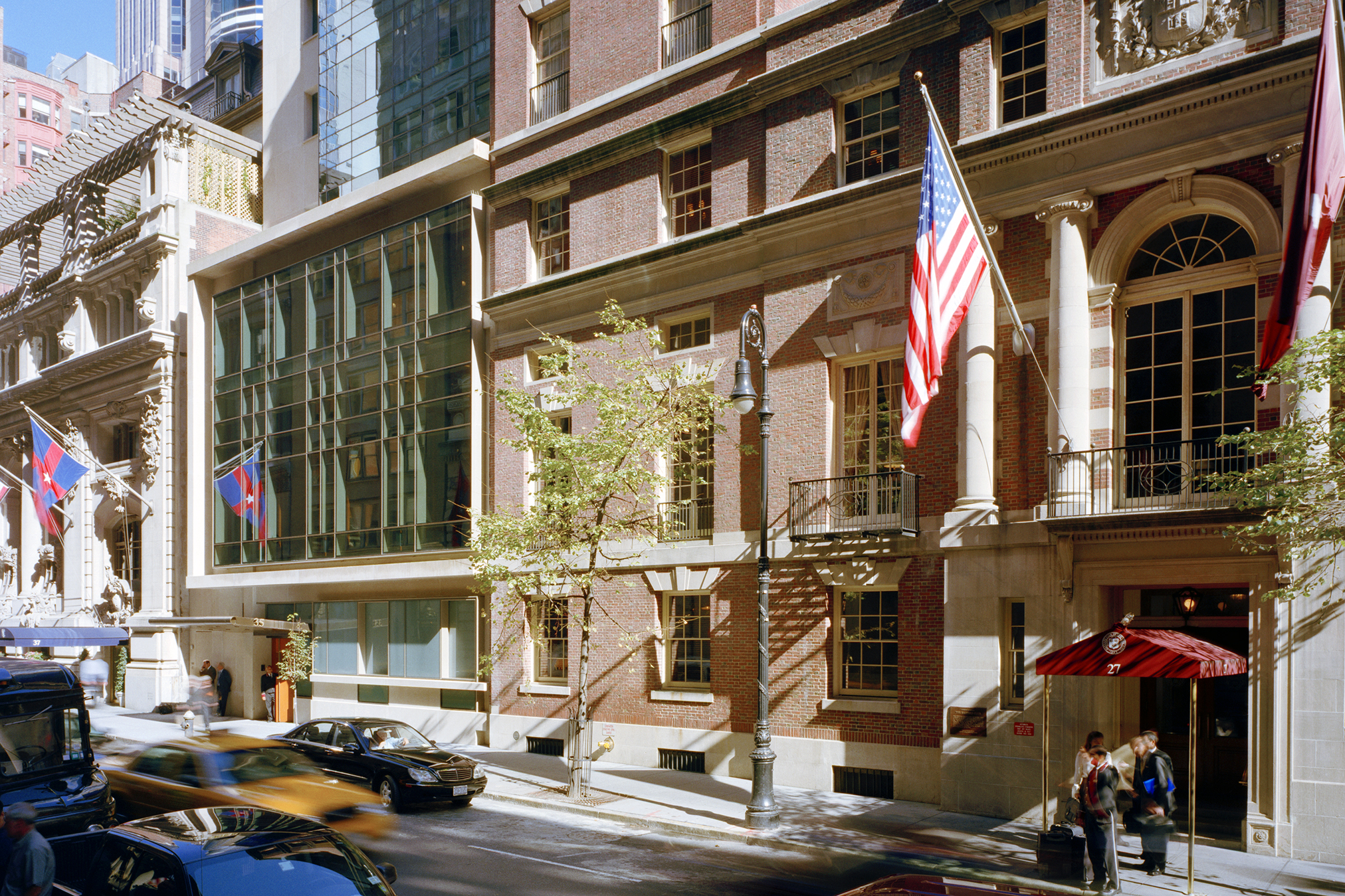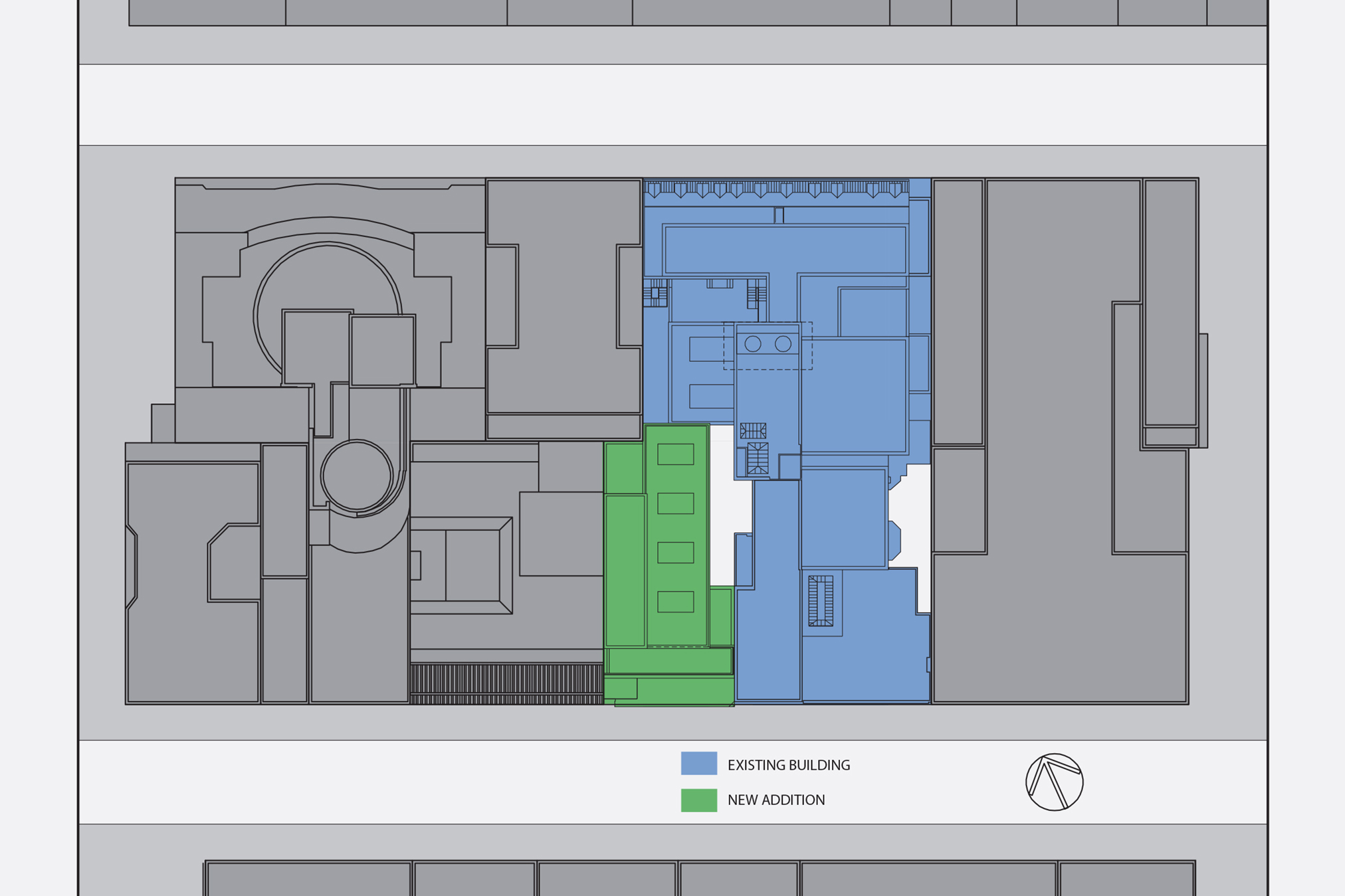Harvard Club of New York
New York, NY
renovation 88,750 SF • expansion 35,560 SF
McKim, Mead & White’s Harvard Club (1894, addition 1915) was one of first buildings to be designated a New York City landmark and Davis Brody Bond’s addition gives it an appropriate contemporary partner. DBB was selected though a competition in which we demonstrated our commitment to complement the existing neo-Georgian building with a forthright 21st century design. The eight story addition matches the scale of the adjacent buildings and responds meaningfully to their detail and ornament without imitation.
The expansion program is a complex mix of guest bedrooms, squash courts, conference facilities, a banquet hall, and administrative offices. These are laid out in a clear and efficient arrangement signaled by the various expressions on the limestone and glass facade. Large windows draw in natural light to create an open environment that contrasts with the more private original building. Mahogany paneling and crimson fabrics evoke Harvard’s collegiate atmosphere.
The project adhered to an aggressive schedule. The Harvard Club had to achieve “beneficial occupancy” — at least two occupied floors — by a strict deadline to avoid tax penalties. To meet this demand, DBB phased the expansion to complete administrative and guest room floors first, allowing the balance of work to be finished on a less hectic schedule.
We deliberately left the Club’s traditional entrance in use, but also provided a new entry for universal accessibility and special events. The addition is connected to the original clubhouse at most levels, and several of its historic interiors have been sensitively renovated. Since the building has been completed, the Club’s attendance and membership have increased and the new facilities are in constant use. The Harvard Club addition has been praised by the Club’s members and is a welcome addition to its landmark streetscape. The New York City Landmarks Preservation Commission hailed the new building as “elegant,” “beautiful,” and an “excellent design.”
(Photography by Paul Warchol)









